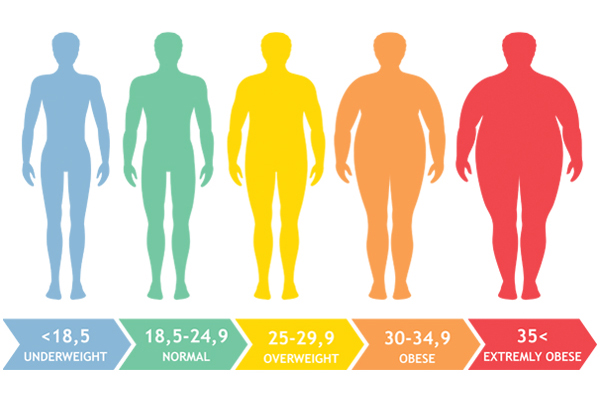If you’re curious about whether there's a specific "healthy weight" to aim for, the truth is that there isn't a one-size-fits-all number you should be striving to reach.
Your healthy weight is influenced by various factors, and it's unrealistic for everyone to have the same target weight.
However, each person has a healthy weight range they can aim for to reduce the risk of weight-related health issues. Here's how you can estimate yours.
How to Determine Your Healthy Weight
Your age, height, gender, bone density, muscle-to-fat ratio, and overall health all play a role in determining your ideal weight.
While there isn't a straightforward formula to calculate your healthy weight, medical professionals commonly use four metrics:
These metrics serve as guidelines to help you identify a healthy weight range, but it's important to consider other factors such as energy levels, clothing fit, and overall well-being.
Understanding Body Mass Index (BMI)

Body Mass Index (BMI) is a measure of body fat based on weight and height.
Doctors use BMI as a screening tool to assess the risk of obesity-related health conditions like heart disease, high blood pressure, diabetes, and sleep apnea.
To calculate your BMI, divide your weight in pounds by your height in inches squared, then multiply by 703. Alternatively, you can use an online BMI calculator.
Based on your BMI, you fall into one of the following categories:
- Underweight = BMI < 18.5
- Normal weight = BMI 18.5–24.9
- Overweight = BMI 25–29.9
- Obesity = BMI of 30 or greater
While BMI provides a general idea of your weight status, it's essential to consider body composition, waist circumference, and body fat percentage for a more comprehensive assessment.
Exploring Other Metrics for Healthy Weight
Apart from BMI, absolute waist circumference, hip-to-waist ratio, and body fat percentage are valuable indicators of healthy weight.
Absolute waist circumference, measured just above the belly button, can help determine if your weight falls within a healthy range.
Calculating your hip-to-waist ratio can also provide insights into your weight status and potential health risks.
Monitoring body fat percentage, through methods like DEXA scans or bioelectrical impedance, offers a more accurate assessment of fat levels compared to BMI.
Striving for a Healthy Weight Holistically
While numerical metrics are useful, it's equally important to consider how you feel overall in terms of energy levels, health status, diet, and sleep quality.
Instead of fixating solely on the numbers on the scale, focus on achieving a better weight that supports your well-being and reduces health risks.
As Marty Davey, M.S., R.D., emphasizes, aiming for progress rather than perfection is key to improving health outcomes, regardless of the starting point.
